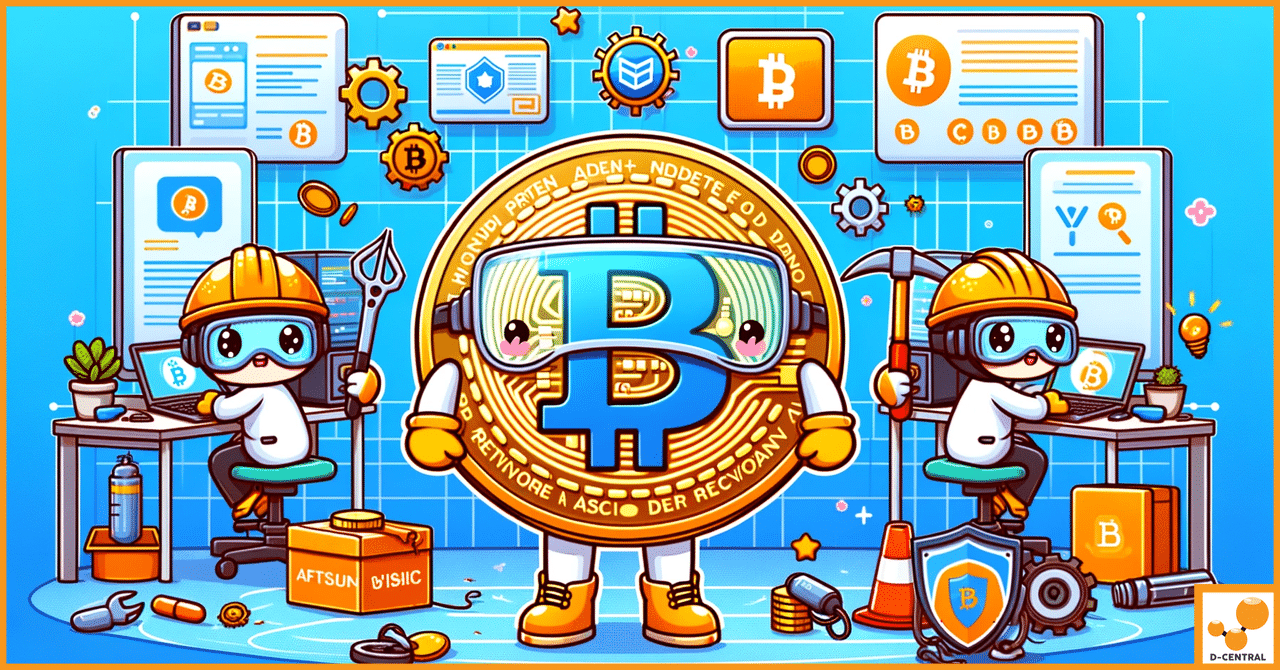
How To Prevent And Recover From ASIC Viruses And Remote Attacks
In the rapidly evolving landscape of Bitcoin mining, a new challenge has emerged that poses a significant threat to the
4479 Desserte Nord Autoroute 440, Laval, QC H7P 6E2

In the ever-evolving landscape of digital currencies, Bitcoin stands as a pioneering force, having ushered in a new era of decentralized finance. Since its inception in 2009, Bitcoin has not only dominated the cryptocurrency world but has also challenged traditional notions of what constitutes ‘money’. Its rise from an obscure digital token to a valuable asset has sparked widespread interest and debate, reshaping the financial sector and influencing global economic trends.
Traditionally, the concept of ‘backing’ a currency has been central to its acceptance and stability. Historically, currencies were often backed by physical commodities, like gold or silver, providing tangible assurance of their value. In more recent times, fiat currencies, such as the US dollar or the Euro, are backed not by physical assets but by the trust and authority of the governments that issue them. This shift marked a significant transition in the understanding of value and trust in the monetary system.
Bitcoin, however, represents a radical departure from these traditional models. It is not backed by any physical commodity, nor is it underpinned by any government decree. This leads to the intriguing question: What gives Bitcoin its value? In this article, we delve into the unique mechanisms by which Bitcoin, devoid of physical backing or governmental support, secures its place as a valuable asset. We explore the intricate blend of technology, market dynamics, and user trust that underpins Bitcoin’s worth, offering insights into how this groundbreaking digital currency maintains its value in a rapidly changing world.
The concept of ‘backing’ a currency is pivotal in understanding its value and stability. Historically, the backing of a currency referred to its direct link to a tangible asset, typically a precious metal like gold or silver. This link provided a guarantee of value, ensuring that the currency could be exchanged for a set amount of the asset, thereby instilling trust and stability in the monetary system. This system, known as the gold standard, was prevalent until the mid-20th century and formed the backbone of international finance.
With the advent of fiat currencies, the notion of backing underwent a significant transformation. Fiat money, such as the US dollar, the Euro, or the Japanese Yen, is not backed by physical commodities. Instead, its value is derived from the trust and confidence that people place in the issuing government. This trust is underpinned by the government’s ability to maintain economic stability, control inflation, and uphold the legal structures that support the currency’s use. In essence, the backing of fiat currencies is a blend of socio-economic factors, government policies, and the overarching belief in the government’s ability to honor its financial obligations.
Bitcoin, in stark contrast, operates on an entirely different paradigm. It is not anchored to a physical asset, nor is it issued or regulated by any central authority. Instead, Bitcoin’s backing comes from its technological framework and the network of users who believe in its value. The decentralized nature of Bitcoin – powered by blockchain technology – ensures transparency, security, and immutability of transactions. This technological backing is complemented by the principles of scarcity and demand. With a capped supply of 21 million coins, Bitcoin’s design inherently includes scarcity, akin to precious metals, which plays a crucial role in its valuation.
Furthermore, the backing of Bitcoin is also psychological and market-driven. It hinges on the collective belief of its users and investors in its potential as a store of value and a medium of exchange. This belief is continuously shaped by market dynamics, public perception, and the evolving landscape of digital currencies.
Thus, while Bitcoin diverges significantly from traditional currencies in terms of backing, it establishes its value through a unique amalgamation of technology, market forces, and user trust. This divergence is not just a technicality but represents a fundamental shift in how we perceive and value digital assets in the modern era.
Bitcoin’s value proposition is a complex interplay of factors that extend beyond the traditional concept of physical backing. Unlike fiat currencies or commodities like gold, Bitcoin’s value is not anchored in physical attributes or government endorsement. Instead, it emerges from a combination of technological innovation, market dynamics, and the trust of its user community.
At D-Central Technologies, we recognize the intrinsic value of Bitcoin as more than just a digital currency. It represents a new paradigm in financial sovereignty and technological advancement. Our experience in the field of Bitcoin mining and ASIC repairs has shown us firsthand the robustness of the Bitcoin network and its appeal to a diverse range of users. We see Bitcoin’s value as being deeply rooted in its ability to provide a decentralized, secure, and efficient means of transaction, free from the constraints of traditional banking systems. This value is not just monetary but also ideological, resonating with the principles of financial freedom and innovation.
Bitcoin’s value proposition is multifaceted, deriving from its technological prowess, scarcity, market demand, and the unwavering trust of its community. As Bitcoin continues to evolve and gain acceptance, these factors collectively reinforce its standing as a revolutionary digital asset in the global financial landscape.
The value and appeal of Bitcoin are inextricably linked to its technological foundation, primarily the blockchain technology, Bitcoin mining, and the proof of work consensus mechanism. These components not only define Bitcoin’s operational framework but also significantly contribute to its reliability and trustworthiness as a digital currency.
1. Blockchain Technology and Bitcoin’s Value:
2. Bitcoin Mining and Proof of Work:
3. Contribution to Reliability and Trustworthiness:
In summary, the technological backbone of Bitcoin – comprising blockchain technology, Bitcoin mining, and the proof of work mechanism – is fundamental to its value. These technologies provide a secure, transparent, and decentralized framework, making Bitcoin a reliable and trustworthy digital currency. At D-Central Technologies, we recognize and leverage these technological strengths in our Bitcoin mining operations, contributing to the overall security and efficiency of the Bitcoin network.
The value of Bitcoin is not only a reflection of its technological prowess but also a product of complex market dynamics and investor confidence. Understanding these elements is crucial to comprehending Bitcoin’s fluctuating value and its appeal to investors.
1. Analysis of Market Trends and Investor Behavior:
2. Role of Media and Public Perception:
3. Investor Sentiment and Its Impact:
4. Case Studies: Market Dynamics Affecting Bitcoin’s Price:
Bitcoin’s market dynamics and investor confidence are influenced by a myriad of factors, including technological developments, media coverage, public perception, and broader economic conditions. These elements collectively shape the value and appeal of Bitcoin as a digital asset. At D-Central Technologies, we understand these market dynamics and strive to provide our clients with the knowledge and tools to navigate the Bitcoin ecosystem effectively.
Bitcoin’s ascent from a niche digital token to a globally recognized form of money is a testament to its remarkable journey towards legitimacy. This journey is marked by significant milestones, regulatory developments, and increasing institutional adoption, all of which have played a crucial role in shaping Bitcoin’s current status in the financial world.
1. Historical Perspective on Bitcoin’s Evolution:
2. Regulatory Developments and Challenges:
3. Institutional Adoption and Mainstream Acceptance:
4. D-Central Technologies’ Perspective on Bitcoin’s Future:
Bitcoin’s journey towards legitimacy is an ongoing process marked by challenges and triumphs. Its increasing acceptance by institutions and regulators, coupled with its technological strengths, positions it as a formidable player in the global financial landscape. At D-Central Technologies, we remain at the forefront of this evolution, embracing the opportunities that Bitcoin presents for the future.
As Bitcoin continues to carve its niche in the financial world, it faces a myriad of challenges and misconceptions. Understanding these is crucial for anyone engaging with Bitcoin, whether as an investor, a user, or a curious observer.
1. Addressing Common Misconceptions:
2. Regulatory Challenges:
3. Scalability and Technical Challenges:
4. Public Understanding and Perception:
While Bitcoin faces challenges in terms of regulation, scalability, and public perception, these are not insurmountable. Ongoing developments in technology, combined with increasing public awareness and clearer regulatory frameworks, are likely to address many of these challenges. As a leader in the Bitcoin mining industry, D-Central Technologies is committed to navigating these challenges and contributing to the maturation and understanding of Bitcoin.
In the realm of digital currencies, Bitcoin stands out as a revolutionary force, challenging traditional financial paradigms and redefining the concept of value. Throughout this article, we have explored the multifaceted nature of Bitcoin’s backing, which, unlike traditional currencies, is not rooted in physical commodities or government decree. Instead, Bitcoin’s value is anchored in a combination of advanced technology, unwavering trust from its community, and dynamic market forces.
Bitcoin represents more than just a digital currency; it symbolizes a shift towards a more decentralized and equitable financial system. Its resilience, adaptability, and growing institutional adoption highlight its unique position and potential in the global financial landscape.
As we continue to witness Bitcoin’s evolution and increasing relevance, D-Central Technologies invites you to be a part of this exciting journey. Whether you are new to Bitcoin or an experienced miner, our range of services and expertise in Bitcoin mining can help you navigate this dynamic field. From ASIC repairs to comprehensive mining support, D-Central Technologies offers the tools and knowledge you need to succeed in the Bitcoin ecosystem.
We encourage you to explore our services and learn more about how we can help you harness the power of Bitcoin. Visit D-Central Technologies to discover how we are leading the way in Canada’s Bitcoin mining industry and how you can be a part of this groundbreaking movement.
What is Bitcoin?
Bitcoin is a pioneering digital currency, introduced in 2009, that operates in a decentralized manner, challenging traditional financial systems and reshaping global economic trends.
What does it mean for a currency to be ‘backed’?
Traditionally, a currency being ‘backed’ refers to being linked to a physical commodity like gold or having the trust and authority of governments, as seen with fiat currencies. Bitcoin, however, gains value from its underlying technology and the trust of its community.
Why is Bitcoin valuable if it’s not backed by physical commodities or governments?
Bitcoin holds value due to its unique characteristics: its decentralized blockchain technology ensures transparency and security; it has a capped supply that introduces scarcity; and it gains widespread adoption and trust as a medium of exchange and store of value.
How does the blockchain technology add to Bitcoin’s value?
The blockchain technology provides a decentralized ledger system that records transactions across multiple computers, which brings about high levels of security and transparency, bolstering user trust in Bitcoin.
Can Bitcoin’s volatility be seen as an indicator of instability?
Bitcoin’s volatility is more indicative of a new and rapidly evolving market rather than an unstable asset. This volatility may present investment opportunities and reflects its growing market dynamics.
What challenges does Bitcoin face?
Bitcoin faces regulatory challenges due to varied global stances, scalability issues as its user base grows, and misconceptions surrounding its value and use cases.
How is D-Central Technologies involved with Bitcoin?
D-Central Technologies is a Bitcoin mining service provider that offers various services such as ASIC repairs, mining support, and helps navigate the dynamic field of Bitcoin, contributing to the security and efficiency of the Bitcoin network.
DISCLAIMER: D-Central Technologies and its associated content, including this blog, do not serve as financial advisors or official investment advisors. The insights and opinions shared here or by any guests featured in our content are provided purely for informational and educational purposes. Such communications should not be interpreted as financial, investment, legal, tax, or any form of specific advice. We are committed to advancing the knowledge and understanding of Bitcoin and its potential impact on society. However, we urge our community to proceed with caution and informed judgment in all related endeavors.
Related Posts

In the rapidly evolving landscape of Bitcoin mining, a new challenge has emerged that poses a significant threat to the

Are you ready for a unique experience at Canada’s first exclusive Bitcoin conference? This groundbreaking event brings together enthusiasts, professionals,

Home Bitcoin mining has emerged as an exciting opportunity for cryptocurrency enthusiasts to participate in the blockchain revolution. However, success